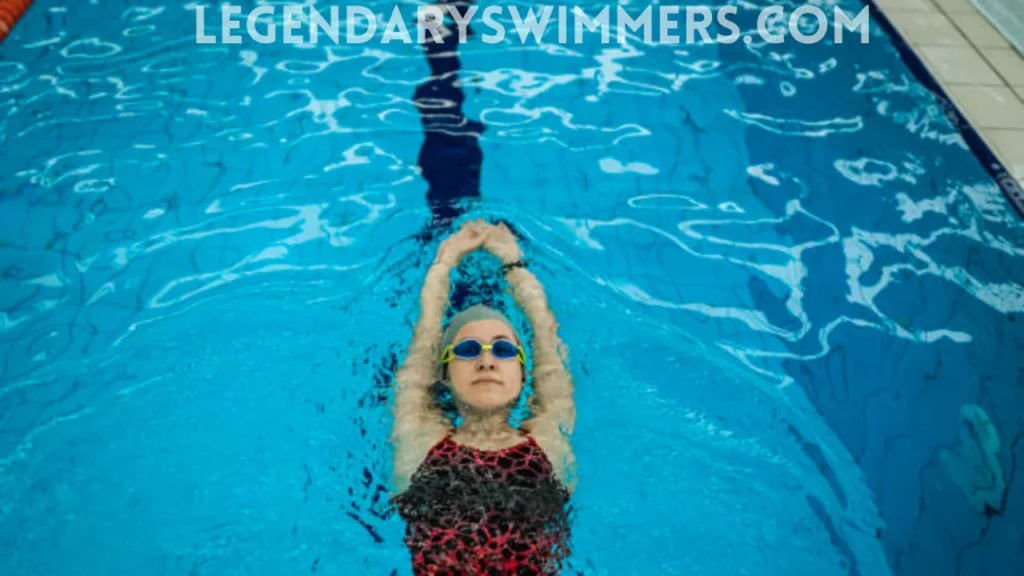
How to Swim with Fins: Experts Guide for Swimmers
- Updated:
Swimming with fins is like adding a turbo boost to your time in the water. Whether you’re a beginner looking to build confidence or a seasoned swimmer aiming to enhance speed and technique, fins can transform your aquatic experience. At Legendary Swimmers, we’re passionate about helping you glide through the water with ease and efficiency. In this guide, we’ll explore everything you need to know about swimming with fins, from choosing the right pair to mastering techniques that elevate your performance. Let’s dive in!
- Why Swim with Fins?
- Choosing the Right Fins for You
- Getting Started: Tips for New Swimmers
- Techniques to Swim Faster with Fins
- Using Fins to Improve Breaststroke
- Building Strength and Endurance
- Safety and Common Mistakes to Avoid
- Incorporating Fins into Your Training Routine
- Caring for Your Fins
- FAQs
- Conclusion
Why Swim with Fins?
Fins aren’t just a fun accessory—they’re a powerful training tool. They amplify your kick, increase propulsion, and engage your leg muscles in ways that swimming without them simply can’t. For new swimmers, fins provide extra support, making it easier to focus on stroke mechanics without worrying about staying afloat. For competitive athletes, they’re a secret weapon for building strength, speed, and endurance.
Fins also help improve body position. By adding lift to your legs, they encourage a streamlined posture, reducing drag and helping you glide more efficiently. Plus, they’re fantastic for targeting specific muscle groups like your quads, hamstrings, and glutes, giving you a full-body workout. Whether you’re training for a triathlon or just enjoying a leisurely swim, fins can make every lap more effective and enjoyable.
Choosing the Right Fins for You
Not all fins are created equal, and picking the right pair is crucial for maximizing their benefits. The first thing to consider is your swimming goals. Are you focusing on technique, speed, or strength? Different fins cater to different needs, so let’s break it down.
Short Fins: The Sweet Spot for Most Swimmers
Short fins, often 6-12 inches long, are ideal for beginners and those working on technique. Their compact size mimics a natural kick while providing just enough propulsion to keep you moving smoothly. They’re also great for breaststroke, allowing the whip-like motion needed for an effective kick.
The beauty of short fins lies in their versatility. They work well for all four competitive strokes and don’t dramatically alter your natural kicking pattern. This means the muscle memory and technique you develop with short fins translates more directly to swimming without fins.
Long Fins: When More Isn’t Always Better
Long fins, often used in snorkeling and diving, might seem appealing because they provide more propulsion. However, they can actually slow down your kick rate and create an unrealistic feel that doesn’t translate well to regular swimming. The exaggerated slow, powerful kicks required by long fins can interfere with developing proper racing technique.
That said, long fins do have their place in specific training scenarios, particularly for building raw power in your kick or when working on underwater dolphin kick endurance.
Specialty Fins: MonoFins and Positive Drive Options
MonoFins, which bind both feet together like a mermaid tail, are excellent for developing dolphin kick technique and core strength. While they’re not essential for most swimmers, they can be fun to use and highly effective for butterfly swimmers looking to improve their underwater phase.
Positive drive fins feature a unique design that channels water differently, making them particularly effective for breaststroke training. The special fin shape helps reinforce proper breaststroke kick mechanics.
Getting Started: Tips for New Swimmers
If you’re new to swimming with fins, the sensation can feel a bit like driving a sports car for the first time—thrilling but slightly unfamiliar. Start by practicing in a shallow pool where you can stand if needed. Slip on your fins and get a feel for how they move through the water. You’ll notice they amplify every kick, so focus on keeping your movements smooth and controlled.
One common mistake is over-kicking. Fins are so effective that small, deliberate kicks are often enough to propel you forward. Keep your knees slightly bent and kick from your hips, not your knees, to avoid strain and maximize efficiency. For beginners, fins can also help with flotation, keeping your legs higher in the water and reducing the effort needed to stay balanced.
Try simple drills to build confidence. Push off the wall and glide with your fins, focusing on body alignment. Or, practice kicking on your side with one arm extended, using the fins to maintain momentum. These exercises help you adapt to the added power while refining your technique.
Techniques to Swim Faster with Fins
Once you’re comfortable, it’s time to unlock the speed potential of your fins. Fins are a game-changer for freestyle, backstroke, and butterfly, enhancing your kick’s power and rhythm. To swim faster, focus on maintaining a consistent kick tempo. Short fins are great for keeping your cadence high, while long fins add more thrust per kick, which is ideal for sprint sets.
In freestyle, aim for a six-beat kick—three kicks per arm stroke—to stay synchronized. Fins make this easier by reducing the effort needed to keep your legs moving.
For backstroke, focus on an upward kick motion, letting the fins catch the water and drive you forward. Butterfly swimmers can use fins to exaggerate the dolphin kick, building core strength and perfecting the wave-like motion.
Drills are your best friend here. Try vertical kicking, where you tread water in the deep end with your fins, keeping your body upright. This builds leg endurance and strengthens your kick.
Another great exercise is swimming with a kickboard, isolating your legs and letting the fins do the work. These drills not only boost speed but also improve your overall swimming efficiency.
Using Fins to Improve Breaststroke
Breaststroke deserves special attention because its unique kick requires a specific approach. Short, flexible fins are best for this stroke, as they allow for the outward sweep and inward snap of a proper breaststroke kick. Fins help exaggerate the motion, making it easier to feel the water and refine your technique.
To improve your breaststroke with fins, focus on timing. The kick should follow the arm pull, with a brief glide to maximize distance per stroke. Fins add propulsion, but they can also highlight flaws in your form. If your knees are bending too much or your feet aren’t flexing properly, the fins will amplify the issue. Use this feedback to adjust your kick, keeping it wide but controlled.
A great drill is to swim breaststroke with fins while holding a kickboard, isolating the kick, and focusing on the whip-like motion. You can also try underwater breaststroke pulls with fins to build power and streamline your glide. These exercises strengthen your legs and help you develop a more efficient stroke.
Building Strength and Endurance
Fins aren’t just for speed—they’re a fantastic tool for building lower-body strength. The added resistance forces your muscles to work harder, targeting your quads, hamstrings, and calves. Over time, this translates to a stronger kick and better overall endurance.
Incorporate fins into your workouts with targeted sets. For example, swim 4×50 meters with fins at a moderate pace, focusing on a powerful kick. Rest for 15 seconds between each rep. Or, try a 200-meter fin swim, alternating between freestyle and backstroke every 50 meters. These sets build muscle while keeping your heart rate up.
Fins also improve ankle flexibility, which is crucial for a strong flutter kick. Stiff ankles limit your range of motion, but regular fin use can loosen them up, making your kick more fluid. Just be careful not to overdo it—start with shorter fin sessions and gradually increase duration to avoid fatigue or cramping.
Safety and Common Mistakes to Avoid
While fins are generally safe, there are a few pitfalls to watch out for. First, don’t rely on them too heavily. Swimming with fins is addictive because it feels effortless, but overusing them can weaken your natural kick. Aim to balance fin and non-fin workouts to maintain versatility.
Another mistake is wearing ill-fitting fins. Too tight fins can cause blisters or foot cramps, while loose ones might slip off and disrupt your rhythm. Always check your fit before hitting the pool. Also, avoid sudden, jerky kicks, which can strain your knees or lower back. Keep your movements smooth and controlled, letting the fins do the heavy lifting.
Finally, be mindful of your surroundings. Fins make you faster and more powerful, which can lead to collisions in a crowded lane. Communicate with other swimmers and choose a lane that matches your pace.
Incorporating Fins into Your Training Routine
To get the most out of fins, integrate them strategically into your swim plan. Use them for warm-ups to loosen your legs or during drill sets to focus on technique. For speed work, incorporate fins into sprint sets, like 8×25 meters at maximum effort with 30 seconds rest. For endurance, try longer swims with fins, like a 400-meter freestyle, to build stamina.
Mix up your strokes and drills to keep things fresh. One day, focus on breaststroke kick drills with short fins; the next, tackle freestyle sprints with long fins. This variety keeps your muscles guessing and prevents plateaus. Aim to use fins for 20-30% of your weekly swim time, leaving plenty of room for non-fin training.
Caring for Your Fins
To keep your fins in top shape, rinse them with fresh water after every swim to remove chlorine or salt. Store them flat or hanging to avoid bending the blades, and avoid exposing them to direct sunlight for long periods, as it can degrade the material. A well-maintained pair of fins can last years, so a little care goes a long way.
FAQs
- Are swim fins good for beginners?
Yes, swim fins help beginners improve kick technique, build leg strength, and maintain better body position in the water. - How do I choose the right swim fins?
Select fins based on your swim goals—short fins for training and technique, long fins for speed and resistance. - Can swim fins improve my swimming speed?
Absolutely. Fins increase propulsion, helping swimmers move faster while focusing on stroke technique and body alignment. - Is it safe to use fins every day?
Using fins regularly is fine, but overuse can strain ankles and calves. Mix fin and non-fin sets for balanced training. - What’s the difference between short and long swim fins?
Short fins are ideal for training and improving technique; long fins create more resistance, building power and speed. - Can kids use swim fins?
Yes, many fins are designed specifically for children. Make sure they fit properly and are used under supervision. - Do professional swimmers train with fins?
Yes, elite swimmers often use fins to refine their kick, improve body position, and enhance swim drills.
Conclusion
Swimming with fins is a game-changer, whether you’re chasing speed, refining technique, or just having fun in the water. By choosing the right fins, mastering key techniques, and incorporating them into your training, you’ll unlock new levels of performance and confidence. At Legendary Swimmers, we’re here to support your journey to becoming a stronger, faster swimmer. So grab your fins, hit the pool, and let’s make waves together!

Natasha Nicole Leyva
Hi, I’m Natasha—swimmer, coach, and aquatic fitness enthusiast. My journey began in New Zealand after a professor recommended swimming to help with a knee injury. The low-impact nature of swimming worked wonders, and it quickly became my favorite form of exercise. This passion grew into a thriving swim academy, and soon, requests for aquatic fitness classes started pouring in. After becoming certified, I realized how powerful water workouts could be for recovery and fitness. Now, I share my expertise here to help others experience the benefits of aquatic movement—whether for recovery, fitness, or fun!







